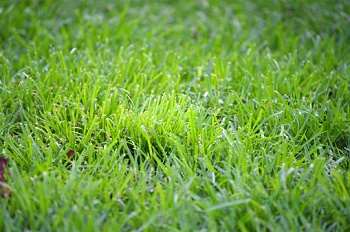By Richard Jauron
Summer is prime time for being outdoors, enjoying lawns and landscapes and making the most of the warmest months of the year. Crabgrass can ruin some of that fun by damaging a landscape’s appearance and overall feel.
ISU Extension and Outreach horticulturists can help answer questions regarding crabgrass and keeping it under control. To have additional questions answered, contact the ISU Hortline at 515-294-3108 or hortline@iastate.edu.

What is the light green, wide-bladed, weedy grass in my lawn?
The light green, wide-bladed grass is probably crabgrass. Crabgrass (Digitaria spp.) is an annual, warm-season grass. Crabgrass seeds begin to germinate when soil temperatures reach 55 degrees Fahrenheit. Germination usually begins about mid-April in southern Iowa, early May in northern parts of the state. Crabgrass continues to germinate over several weeks from spring into summer.
While crabgrass seed germination begins in spring, plants don’t become highly visible in lawns until summer. Crabgrass is a low growing, spreading plant with light green foliage. The leaf blades are approximately 1/4 inch wide. Seedheads appear as several finger-like projections at the top of the main stem. Crabgrass grows rapidly during warm summer weather. Growth slows with the arrival of cooler temperatures in late summer. Plants are destroyed with the first hard frost in fall. However, before it dies a single crabgrass plant can produce thousands of seeds.
How do I control crabgrass in my lawn?
The best way to prevent crabgrass infestations in lawns is to maintain a thick, healthy lawn through proper mowing, irrigation and fertilization. Crabgrass will have a difficult time germinating and surviving in a dense stand of turfgrass.
While cultural practices are important, herbicides may be necessary to control crabgrass in lawns. Crabgrass is most easily controlled with an application of a preemergence herbicide in spring. If crabgrass appears in early summer, postemergence herbicides can be used.
When using a preemergence herbicide, the keys to successful control of crabgrass in lawns are the correct timing of the herbicide application and proper application of the material. Preemergence herbicides must be applied before the crabgrass germinates. If the material is applied too early, crabgrass seeds that germinate late in the season will not be controlled. If applied too late, some crabgrass will have already germinated. Preemergence herbicides should normally be applied in early to mid-April in southern Iowa, mid-April to May 1 in central Iowa, and late April to early May in northern portions of the state.
Weather often varies considerably from year to year in Iowa. Accordingly, gardeners should make adjustments in the timing of the preemergence herbicide application. If the weather in March and April is consistently warmer than normal, apply the preemergence herbicide early in the normal time period. Apply the herbicide late in the recommended time period if Iowa is experiencing a cooler than normal late winter/early spring. If you’re still uncertain as to when to apply a preemergence herbicide, Mother Nature provides some helpful clues. Crabgrass seed germination usually begins with the end of the forsythia bloom season or when redbud trees reach full bloom.
Postemergence control of crabgrass can be obtained with an application of quinclorac to actively growing crabgrass in early to mid-summer. The later the application, the less effective the herbicide. A second application 7 to 10 days after the first treatment may be required for complete control.
How do I control crabgrass in my flower bed?
In flower and vegetable gardens, hoeing and hand pulling are the best control options. When cultivating the garden, avoid deep tillage. The roots of many vegetables and flowers grow near the soil surface. Deep cultivation will cut off some of these roots. Also, deep cultivation will bring deeply buried weed seeds to the soil surface where they can germinate. Hand pulling is best done after a good rain.